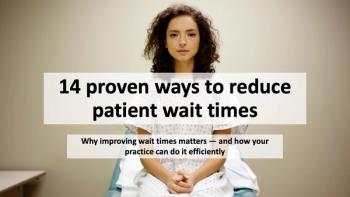
How Mobile Bridges Gaps between Patients and Providers
Providers are dropping the ball when it comes to what patients want out of mobile health platforms. Here's what they should know about its potential.
As healthcare providers, we tend to look at the EHR and IT in medicine strictly from the organization's point-of-view. Recently, though, I came across an interesting article from Accenture Consulting when looking for interesting angles regarding IT and how it affects consumers. The report highlighted that not only are the needs of the patient not being met, but there is a tremendous demand for deploying IT directly to the consumer side.
The authors report a significant unmet desire among patients (healthcare consumers) in interacting electronically with healthcare providers. They are not looking for sophisticated functions, or extreme "bells and whistles," but simple ways to safely, effectively, communicate with their providers on mobile platforms.
There can be potentially significant revenue liability in failing to meet the needs of the healthcare consumer - especially for hospitals. According to the findings, hospitals in particular have engaged only two percent of their patients in using mobile health (mHealth) apps. At the same time, there is an electronic disconnect between healthcare organizations and the patients that they serve - more than half (54 percent) of healthcare consumers report that they would like to use their smartphones and digital devices to interact more with their healthcare providers.
What I found particularly illuminating by the findings were the things that consumers desired to do on mobile platforms:
• Access their healthcare records,
• Create/change/cancel their appointments with their healthcare providers, and
• Request refills on their continuing medications
In our practice, the above three items are something we spend a lot of time doing so that way are better able to meet the requests of our patients. What was also interesting was that for the most part, less than 11 percent of medical apps had these functions built in. We are missing the boat in serving the most importing needs of our patients.
Building out these elements on mobile apps requires careful thought to avoid exposing sensitive and confidential patient information to the wrong people. Electronic access of their EHR by a patient requires clear and detailed formal policy and procedures to ensure that the people who are accessing the EHR are who they say that they are. Protecting a patient's sensitive health information is substantial and can subject a provider or organizations to substantial penalties and/or legal liabilities if not adhered to properly.
That said, the protection of sensitive health data lags significantly behind the technology to distribute the same data. I'm hopeful that we can use biometrics in safeguarding patient access to the EHR. Usernames and passwords are notoriously weak and vulnerable. Patient friends and acquaintances, no matter how well meaning, may be able to gain access to sensitive patient information due to nothing more than the carelessness of the patient.
Fingerprint scanning, like the one on my smartphone, ensures that sensitive data stored on my phone or data accessed using my phone, is more secure. Additionally, I can see facial recognition, retinal scanning, and other biometric technologies being deployed in the future to make the patient/EHR transaction more secure. We have a duty to do everything possible to protect the sensitive health data of the patients who come to us for care.
We also have to get with the program and start figuring out how to make patients more of a partner in their healthcare. With so many healthcare apps in the market currently, and the near ubiquitous nature (in most cases) of smartphones and mobile devices, bringing care to the consumers in mobile platform in a way that is both safe and user-friendly will continue to help bridge the gaps between patients and providers.
As we change how patients communicate with us, we have to change our understanding and processes as to how we communicate with patients and how we serve their needs. Being responsive to the communication cycle means being invested in technology and a willingness to do things differently than maybe we have done in the past.
We live in interesting times. And I look forward to seeing how mobile apps, gaming and healthcare technology impact how the patient partnership evolves in the healthcare market.
Newsletter
Optimize your practice with the Physicians Practice newsletter, offering management pearls, leadership tips, and business strategies tailored for practice administrators and physicians of any specialty.







